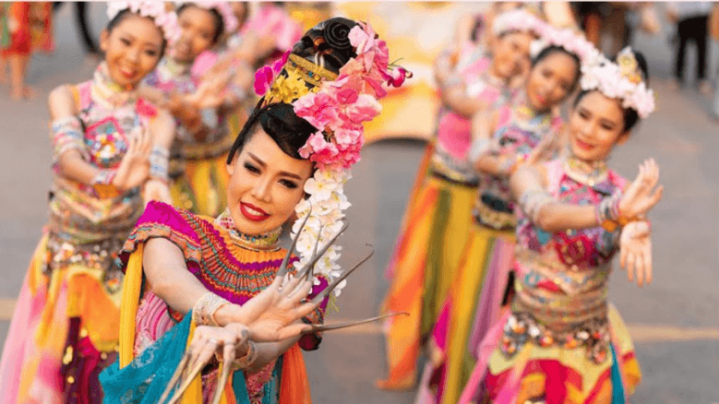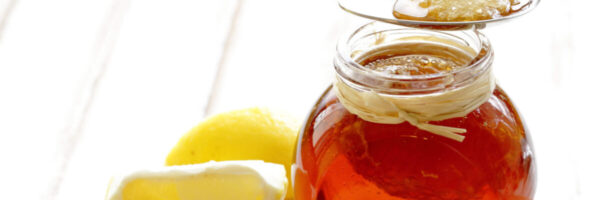
Festivals in Asia
by Masako Tsuruta
There are many cultural festivals in April and May in Thailand, China, India and Japan. Here are just some of them.
1: Thai and Indian culture
In April, there is the famous Thai New Year “Songkran Festival” in Thailand. This year Songkran falls on April 13-15th. The word “Songkran” comes from Sanskrit word meaning, “approaching”.
Thai vocabulary derived from Sanskrit
According to the Wikipedia, not only this word “Songkran”, but over half of the Thai vocabulary is derived from Sanskrit language in India. This clearly shows us that there are some strong cultural connection between Thailand and India.
Lists of Thai vocabulary derived from Sanskrit: adversary, air, animal, apartment, association, bay, blame, boat, building, bus, castle, cloud, company, computer, danger, desk, design, destruction, food, fund, Goddess, glass, grape, great, head, hell, hope, human being, king, intelligence, language, life, living, lion, live, long, loyal, moon, mosque, mountain, name, noodles, paper, perfect, picture, raspberry, review, saddle, science, snow, soap, special, storm, suffering, taste, teacher, temple, ten thousand, time, two, universe, violin, week, woman and you.
Mural of Ramakien at Emerald Buddha Temple (Wat Phra Kaew) in Bangkok
“Ramakien” means the glory of Rama, this originated from the Hindu epic “Ramayana”, and it places a very important role in Thai literature. Many Thai people knows this story, how Lord Rama was gracious, how Hanuman was brave, and how the evil king “Thotsakan” was full of jealousy, anger, and endless greed. Some part of this story can be seen on the mural at Emerald Temple. Thai King Rama II, rewrote this Ramakien version for Khon (Thai traditional performance) drama.
New Year Celebrations in April in India
Thai Songkran Festival falls on April 13th. In India, this day is called “Ugadi”, to celebrate New Year for Deccan region that includes State of Andra Pradesh, Maharashtra, Goa and Karnataka. There is a spiritual significance added according to Indian mythology. This is the day that Lord Brahma started his work, and Lord Rama returned back home after his 14 years of exile in Dandakaranya forest in India.
On April 14th is Tamil New Year in the state of Tamil Nadu, on April 15th is Bengali New Year in the state of Bengali.
Vesak (Buddha Jayanthi, Buddha Poornima)
Almost 95% of Thai are Buddhists. The founder of Buddhism, Gautama Buddha was born in ancient India (5th to 4th century BCE). In 1950 in Sri Lanka, during the first fellowship of Buddhists, “Vesak” day was declared to celebrate as the Buddha’s birthday. This holy day is called “Buddha Poornima in India, Wisakhbucha in Thai, Buddha’s Birthday in China, Hanamatsuri in Japan.
2: Japanese Festival between April and May
Between April and May, there are around 118 festivals in Japan. The most significant one is Kyoto’s “Miyako Odori”, Onbayashi matsuri at Suwa Nagano, Ohanami, Hanamatsuri, Asakusa Sanja Matsuri at Tokyo,
Miyako Odori
Miyako Odori, the showcase of Geisha’s dance and music public show started in 1872 in Kyoto. This rare Geisha’s annual public entertainment show can be only seen from April 1st till 23rd, 24, 27 or 30th. Advance booking and reservation must be done through official agents only.
Onbashira Matsuri
Onbayashi Matsuri is one of the top three unique Japanese festivals. This festival is done at the Suwa Taisha where people worship Japanese Shinto Gods of harvests, wind, water, and agriculture.
Ohanami
Ohanami simply means cherry blossom viewing in English. It started during Heian period, around 812AD among aristocrats and royal families. In 1598, the most extravagant ohanami was conducted by “Shogun Toyotomi”. After over a century and half passed, Japanese people still enjoys ohanami. Nowadays, people love to eat, drink Sake, and sing karaoke under and/or beside cherry blossom trees.
Hanamatsuri
This year May 19th is the Hanamatsuri day. English translation of this days is Buddha’s Birthday or Buddha Poornima. The first official ceremony of this day was conducted by Shotoku Taishi in 606AD, April 8th. The present, Japanese offer specially brewed tea over small Buddha’s statute that right hand points at sky, and left hand points at the earth.
Asakusa Sanja Matsuri
This is one of the three greatest matsuri (festival) in Tokyo, and the widest and largest one in Japan. It is held on the third weekend of every May at Asakusa, Tokyo. There are over hundred Mikoshi carried by Shinto Gods’ worshippers including small children and women.

3: Chinese cultural influence in Thailand
Many Thai are of Chinese origin. Nowadays approximately 14% of the Thai population can still speak Chinese. A span of over 200 years, Thai Chinese is now deeply rooted in Thai society. King Ram I, the founder of present Chakri Dynasty was of Chinese descent.
There are Teochew, Yunnanese, Hokkien and Hakka ethnicity groups in Chinese community in Thailand. Teochew people came via Gulf of Siam by boat and arrived at Chonburi and Samut Prakan. Many of them settled around Chao Phraya River in Bangkok. Hokkiens were good sailors and many of them settled in Southern Thailand including Songkhla, Satun and Phuket. Many big rice traders are Hokkien descendants. Hakka people are seen mainly in Chiang Mai, Phuket and central western provinces. Many private banks were owned by Hakka descendants. The most notable one is the Kasikorn Bank owning family. Yunnanese descendants are seen around Chiang Rai province.
Taochiao (fermented bean paste), soy sauce, tofu, Ba Mii, Khanom Jiin, Guay Chap, Guay Tiaw, Salapao, Khao Kha Moo were brought to Thailand by these Chinese ethnic groups.

Historical background
Ayuthaya was under Burmese’s attack from 16th century onwards. From 1766-1769, Emperor Qianlong in China sent his armies four times to subdue the Burmese army, but failed. In 1825, there were 230,000 Chinese lived in Thailand, that grew till 792,000 in 1910, approximately 12.2% of Thai population. Mainly these Chinese immigrants were men, and later they married to Thai women. Their children were called Shino Thai or Luk-Jin in Thai. In the early 20th century, many Chinese women immigrated to Thailand. From 1882 to 1917, around 13,000 to 34,000 Chinese from Southern China entered to Thailand yearly. Most of them settled in Bangkok. By 1970, more than 90% of Chinese born in Thailand, abandoned their Chinese citizenship and obtained Thai citizenship. In 1975, diplomatic tie between China and Thailand was established.
Chinese New Year
This year, the Thai Government officially announced Chinese New Year as an official holiday in Thailand.
Qingming Festival on April 4th
Qingming (ancestor’s day) normally occurs around April 4 to 6th, that is, the 15th day of the Spring Equinox. This day is designated for cleaning and sweeping graves and for worshipping ancestors by offering food and burning incense. Qingming is a public holiday in China.
Qingming (ancestor’s day) normally occurs around April 4 to 6th, that is the 15th day from the Spring Equinox. This day is designed for cleaning and sweeping the graves, and for worship ancestors by offering food and burning incense. This Qingming is a public holiday in China. Qingtuan (green dumpling made of glutinous rice and barely grass, filled with red or black bean paste) is the famous food to be offered.
Water splashing festival in Xishuangbanna, China
April 13 -15th is the water splashing festival days for Dai ethnic minority in China. It is very similar to the Songkran festival in Thailand.
Thai Chinese Business Entrepreneur
Many Thai Chinese has well established business, and representing all levels of Thai society. Today, we can say that they lead a prominent role both in business and political sectors in Thailand.




